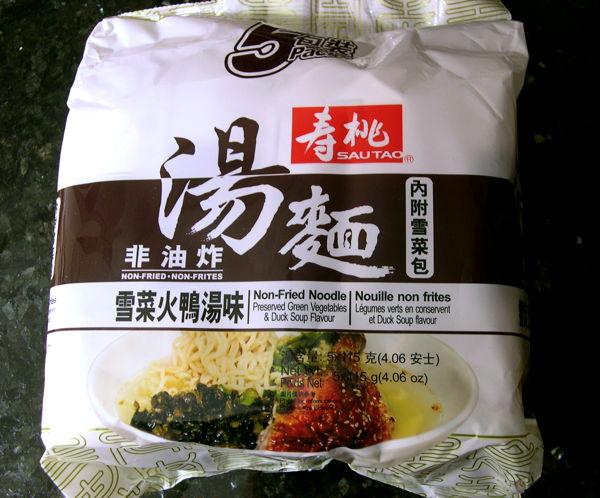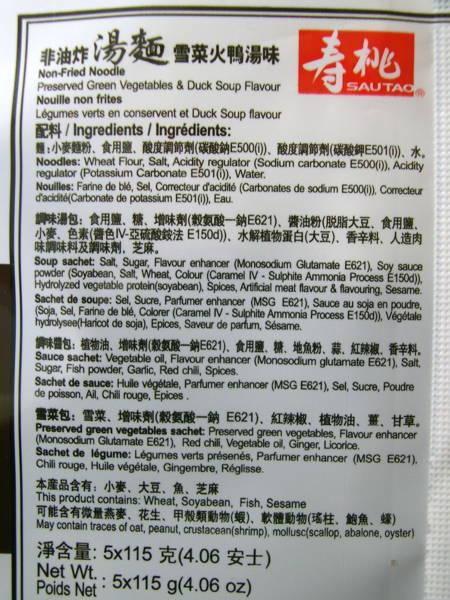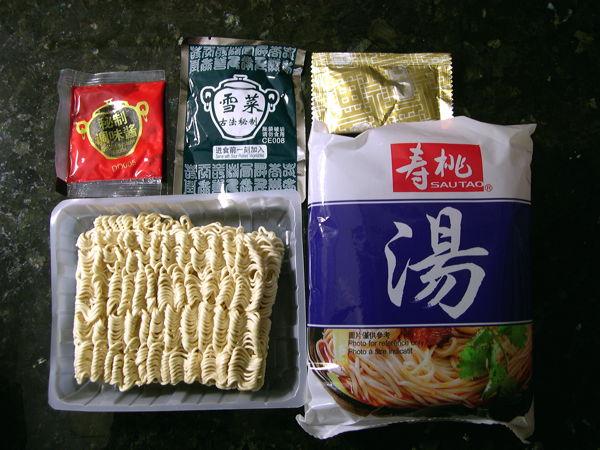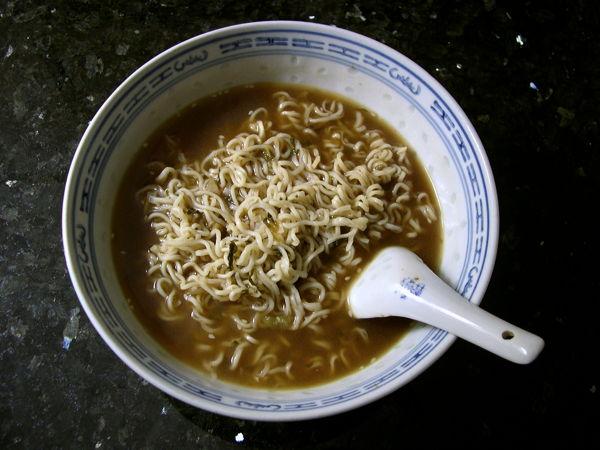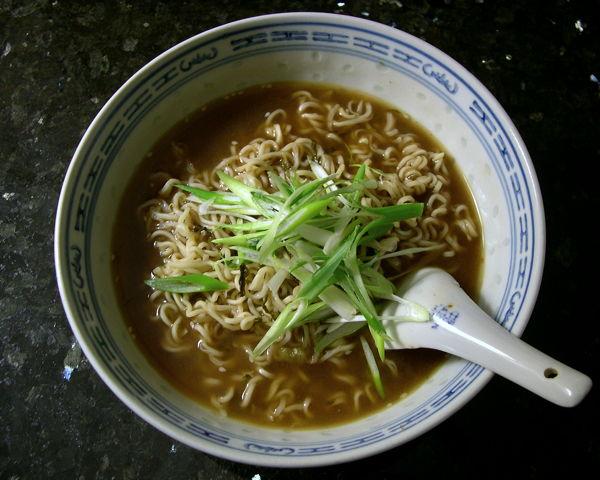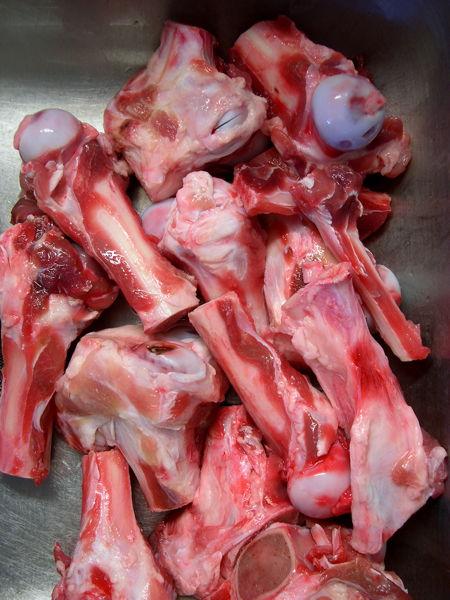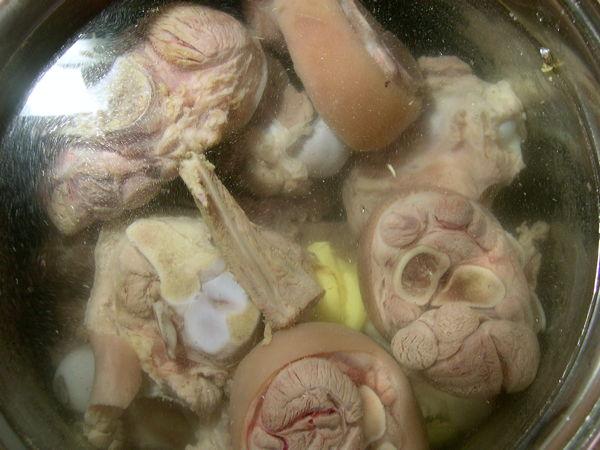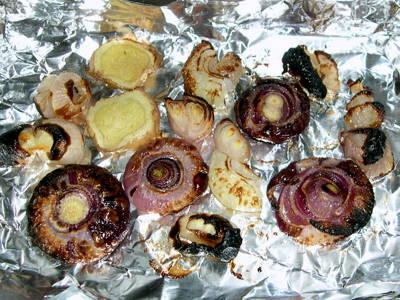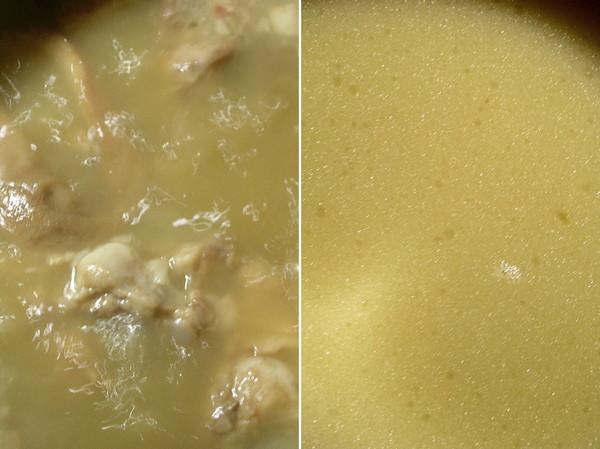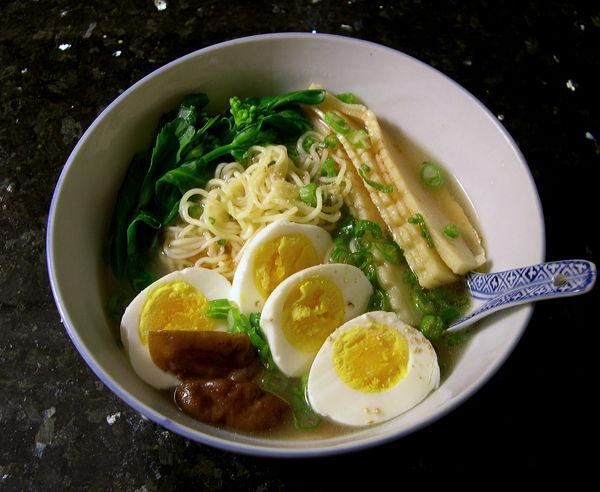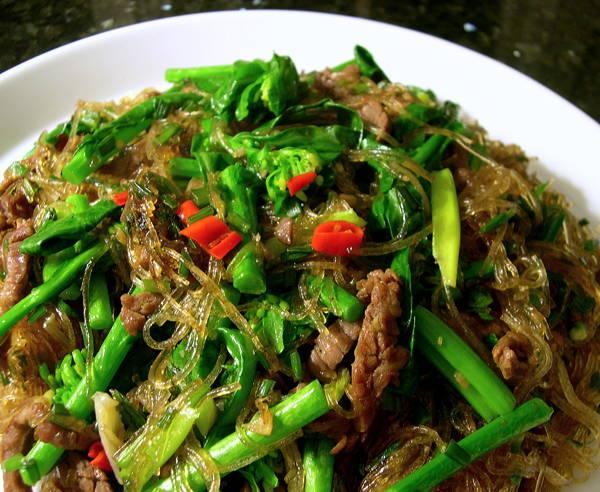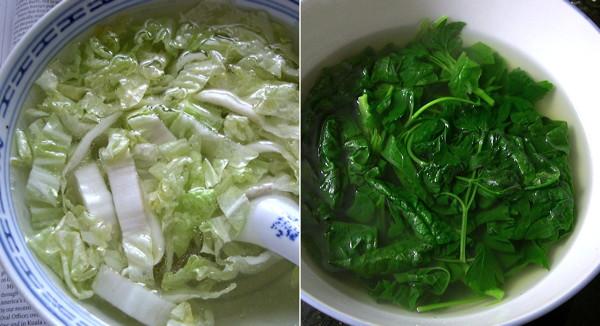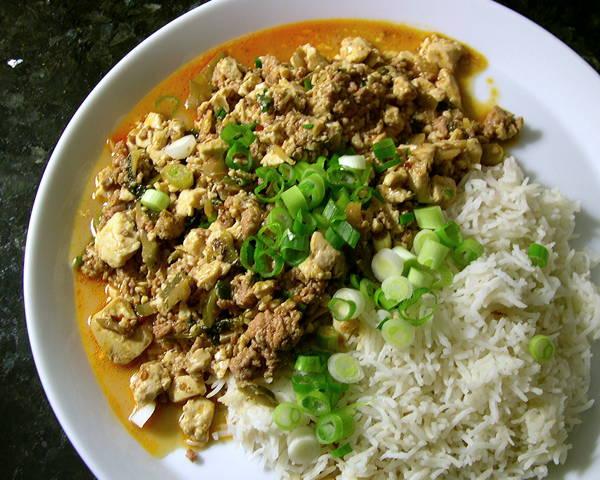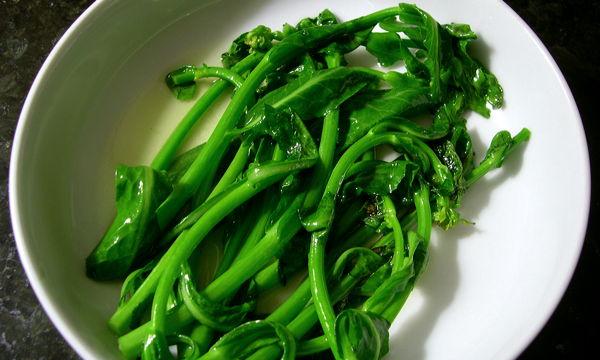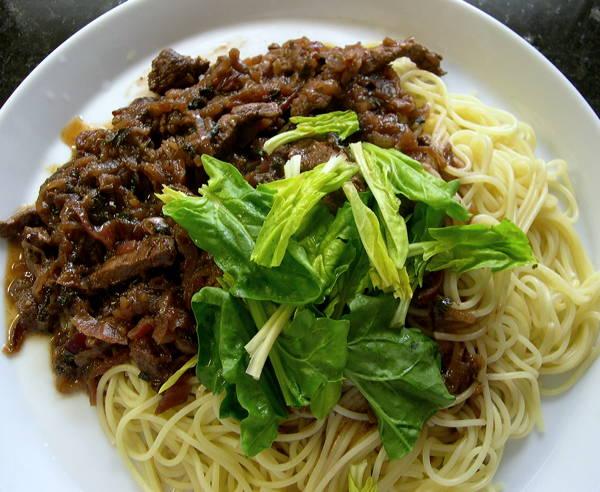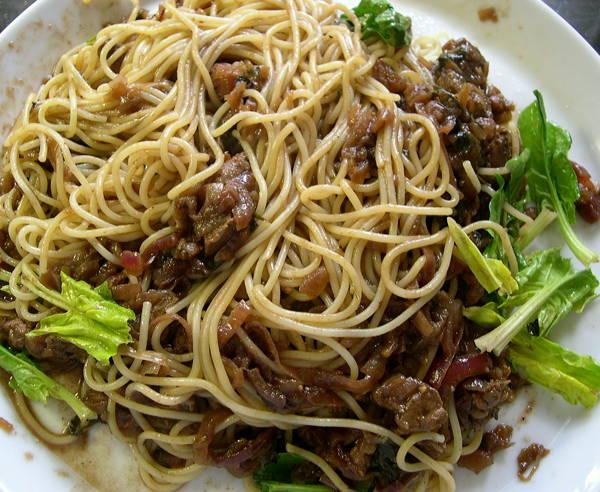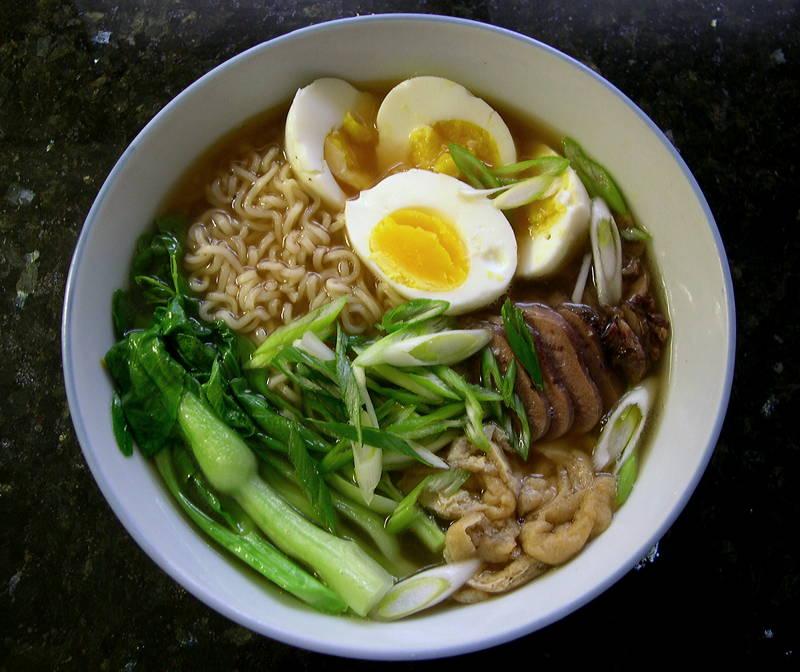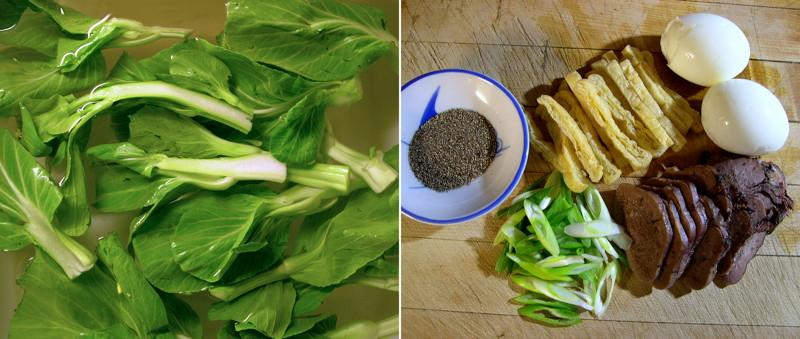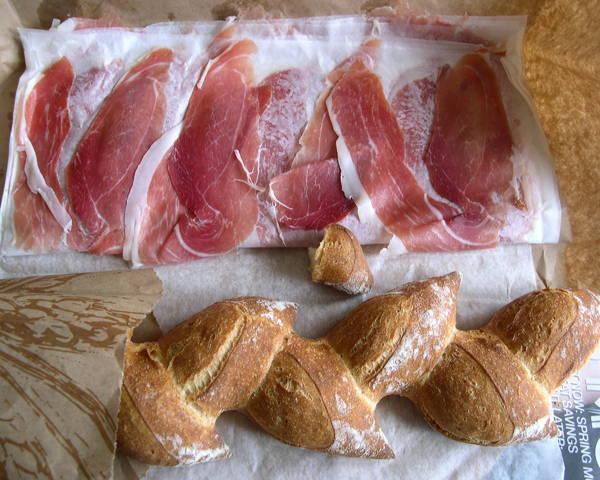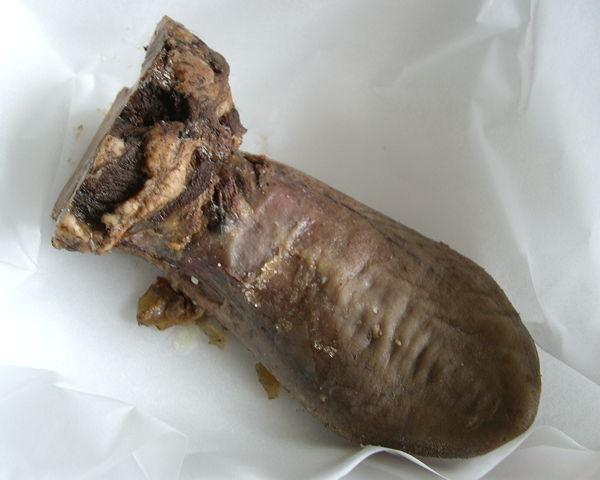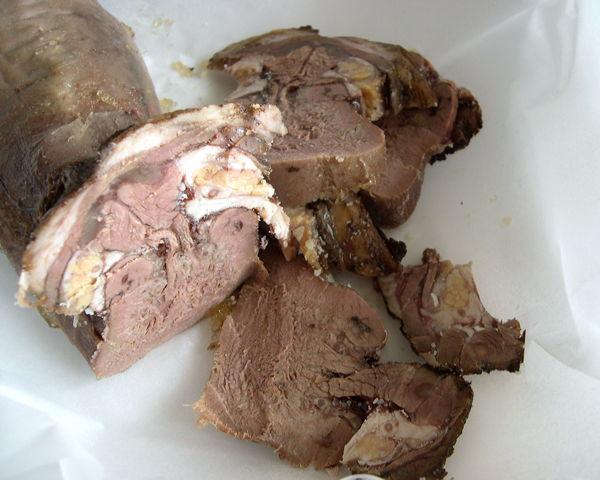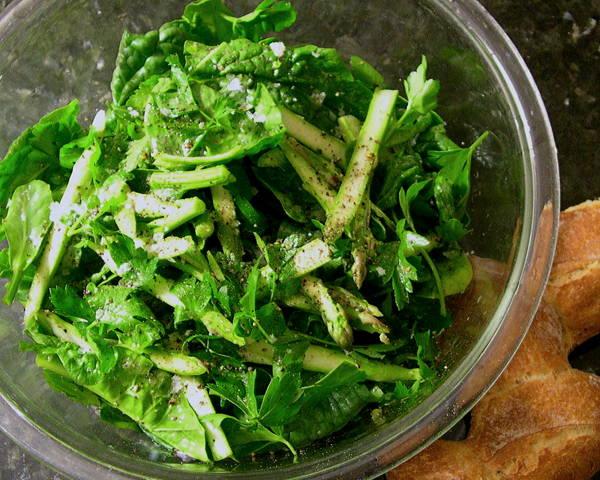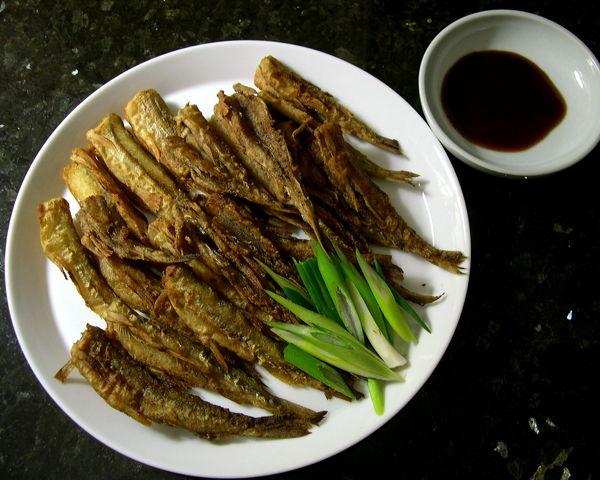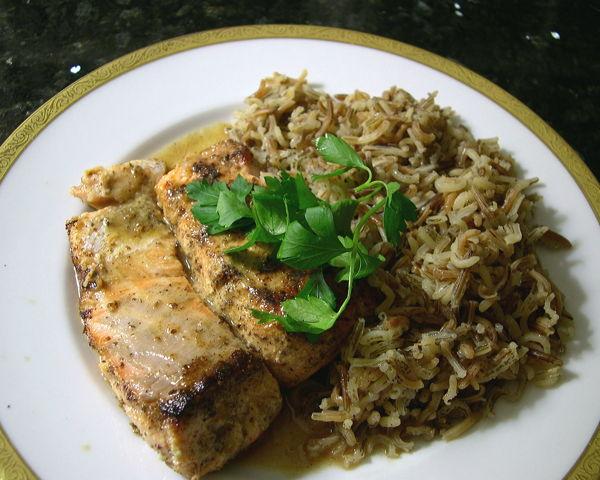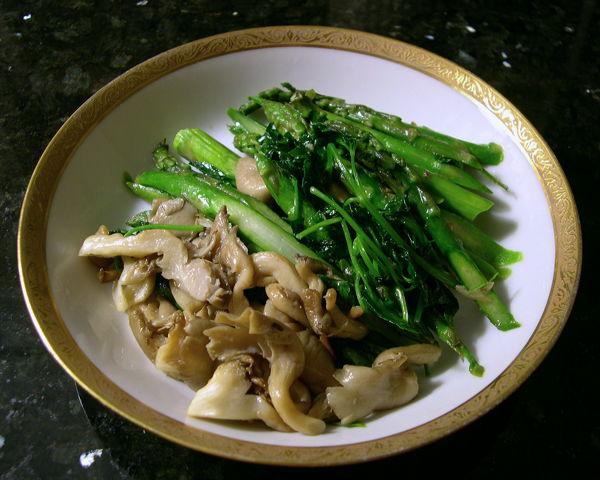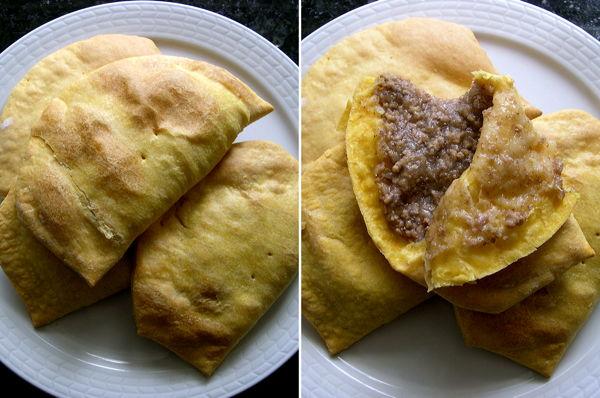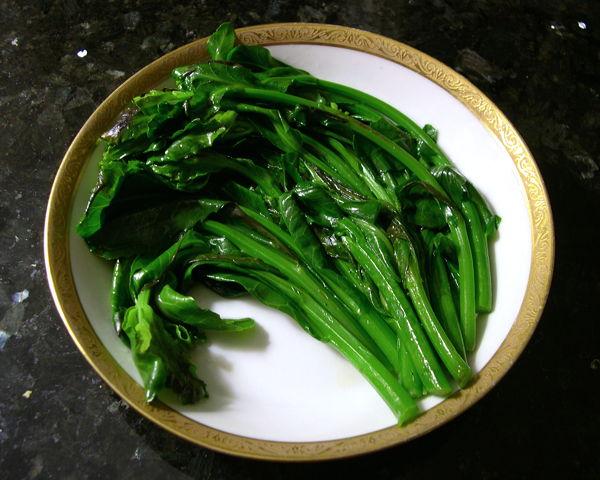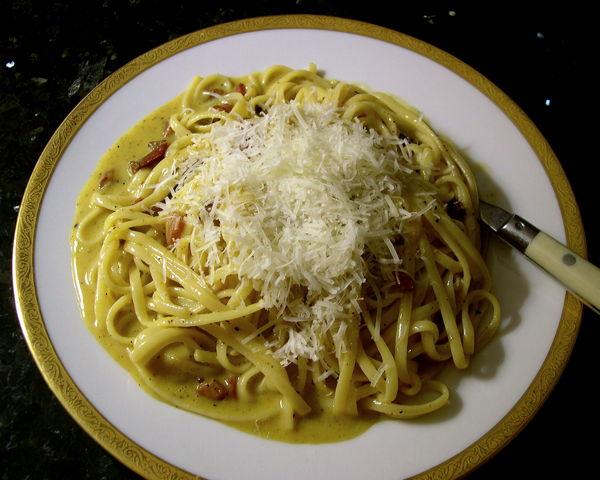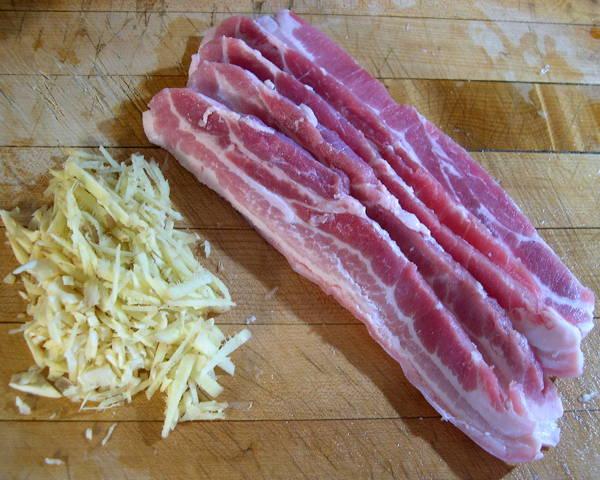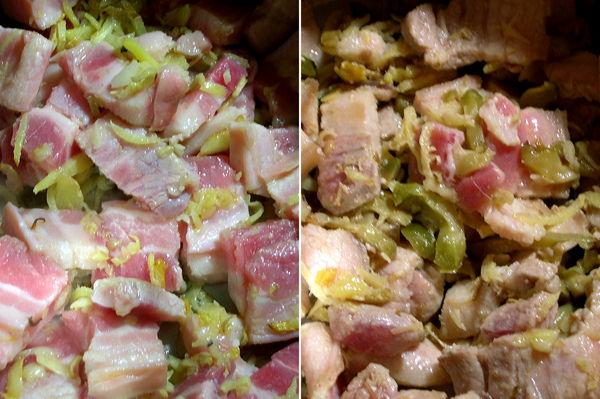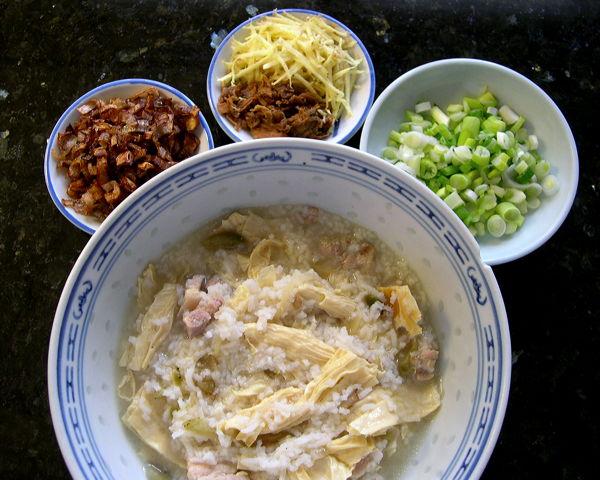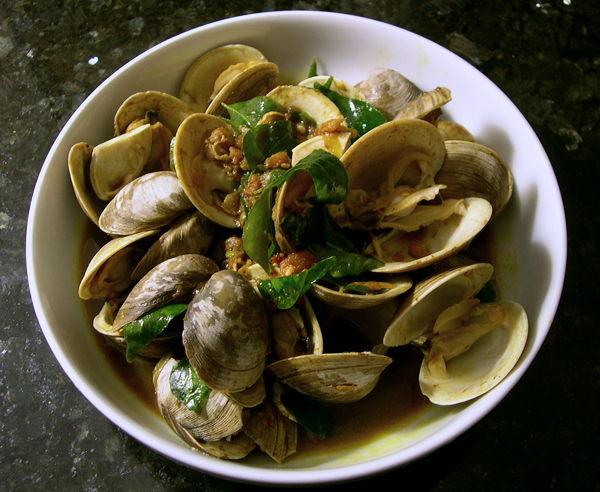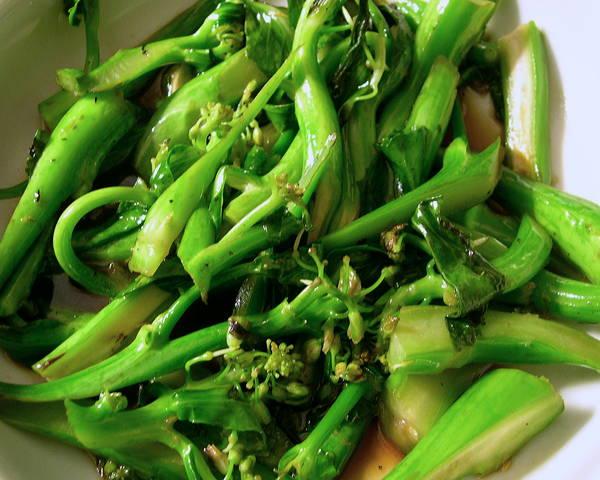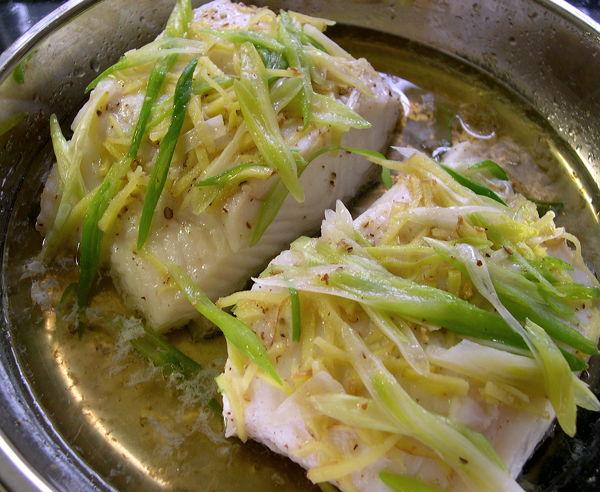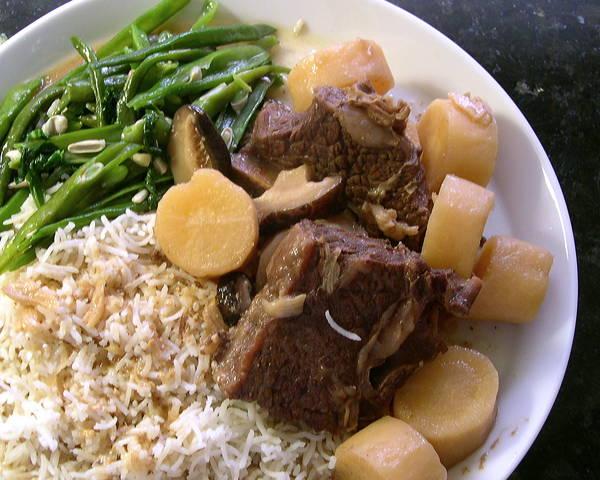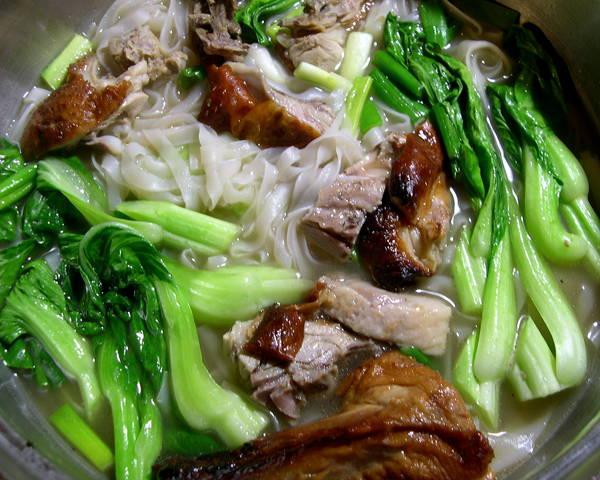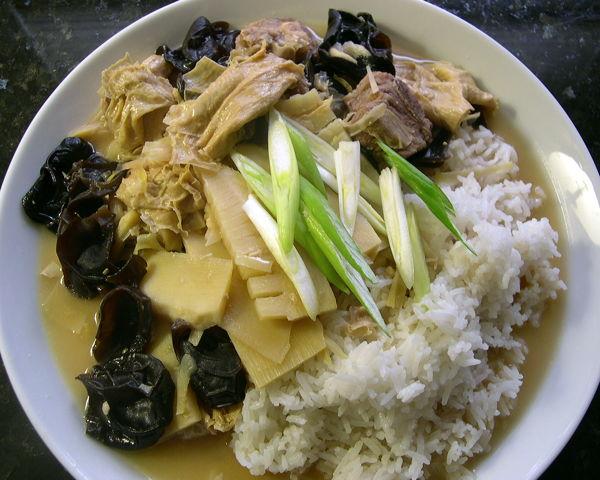-
Posts
3,810 -
Joined
-
Last visited
Content Type
Profiles
Forums
Store
Help Articles
Everything posted by huiray
-
Just wondering, what makes this Indonesian, please?
-
Here's a recent new "instant ramen-type" product I picked up from my usual Chinese grocery which uses NON-FRIED ramen. (I've had - and liked - a similar product with the same sort of seasoning profile but where fairly thick noodles resembling udon was the carbohydrate, and which I *think* I've posted about in some past post or two). The ingredients list, which show the noodles to be wheat noodles with "kansui" (Na2CO3 + K2CO3) in it = alkaline wheat noodles = ramen, according to the definitions of some posters here and elsewhere. ;-) The package contents of one of the packages within the larger 5-pack packaging. After cooking according to the package instructions (2 min simmer, shut off heat, add seasoning etc package contents --- it takes a few minutes to do all that so the noodles sit in the slowly-cooling-but-still-hot liquid for those minutes so it makes sense to do the cooking for the 2 minutes specified to maintain the chewiness of these noodles, which they do indeed have) and then transferring to a serving bowl: There's actually quite a bit of the preserved mustard in that bowl of stuff - it's not visually that obvious because a lot of it is now at the bottom of the bowl and a lot is also entangled in the noodles. Simply garnished with sliced scallions and nothing else. Decent but nothing especially noteworthy. Somewhat salty as done with the specified starting amount of water (600 mL). I think I would either add less of the seasoning packet next time (especially since the preserved mustard is already salted) or add more water. Augmentation with other stuff in my usual manner (as opposed to what helenjp says about "most people" not adding anything to such stuff) would also be a likely maneuver on my part for the next time.
-
Try the dish sometime! (Of course, vampires and all non-garlic-loving folks will keep their distance from you for a while afterwards)
-
I get them from the Chinese grocery I frequently go to.
-
Made some pork stock. Bones. Also some sliced bone-in pork hocks. All given a "fei sui" treatment (parboiled, dumped in sink, scrubbed/washed under a running tap) then placed in fresh clean cold water in a clean pot. Sliced ginger & sea salt added. Brought to a boil. Charred shallots & cipollini onions & more ginger also went in. Some skimming done, minimal. Scallions (white parts) & garlic & some ajinomoto also went in. Held at a medium rolling BOIL (covered) for about ~12 hours in all, topping up w/ water as needed but allowing the volume to reduce down somewhat towards the end. L: Boiling away. R: After decanting through 2 stacked fine-mesh metal sieves. About 2+ quarts of richly gelatinous stock obtained. Later on, made a simple bowl of ramen-style noodles, freeform, using part of the stock diluted a bit for the broth. I used fresh (nama) yakisoba noodles [Maruchan] briefly blanched in hot water then drained. Fresh shiitake mushrooms [Shamrock Farm] & sliced poached (水煮) bamboo shoot (winter-type) simmered in the stock. Bowled w/ flowering broccolini [Full Hand Farm] wilted in the water used to blanch the yakisoba; plus two hard boiled eggs & chopped scallions (green parts). Quick drizzles of Hokkaido Kelp Flavor naturally fermented soy sauce & sesame oil.
-
A few recent meals. Pad Woon Sen, that night's version. This one was done with sliced beef strips, broccolini, Thai chillies, the usual sauce mixture, plus etc etc. Freshly made chicken stock/broth, with 1) wong nga pak (Napa cabbage); 2) parsley & spinach. Minced pork, garlic, ginger, hoisin sauce, ja choi (榨菜), chilli+peanut sauce [Lao Gan Ma], oyster sauce, this-and-that, scallions. White rice. This was the second meal from this prep. Simple stir-fried/sautéed fresh broccolini [Full Hand Farm] A snack. A riff on Fegato alla Veneziana (10-year balsamic was used, plus LOTS of sautéed onions) with fedelini [De Cecco] and fresh spinach inner leaves. The calf's liver came from Claus's on one of my grocery shopping trips.
- 485 replies
-
- 15
-

-
@helenjp, regarding stir fried ramen/yakisoba - one idiosyncratic variant which is NOT stir fried and which I have made a few times is something called "patan", as shown on episode 2 of Season 3 of the excellent Kodoku no Gurume, which was said to be an in-house dish of this pork-devoted shop (see the 1st link below) in Yokohama (owned and run by Chinese-origin folks). :-) I talked about it here, here, here, and here. :-D
-
Is the English corruption of this where we get the term Lo Mein? No, the two terms are different. La mian is 拉麵 (Pinyin = lā miàn; Cantonese jyutping = laai1 min6; Japanese = rāmen;¶ "pulled noodle"), whereas lo mein is 撈麵 (Pinyin = lāo miàn; Cantonese jyutping = lou1 min6) and is the transliteration of the Cantonese pronunciation of the term** where it refers to "mixed (seasoned) noodles". I am using the traditional forms of the ideograms here. ** The ideogram 撈 has two pronunciations and two meanings in Cantonese – lou1 (as here) meaning "mix/mixed"; and laau4 meaning "fish out/scoop out" (of water). The latter meaning is shared with the meaning in northern Chinese/Mandarin/etc. P.S. It also may matter where you are when you order "lo mein", at least in the USA. SEE HERE for one discussion that touches upon it in the midst of the larger discussion about what "chow mein" is depending on who's ordering and where you are ordering it. ¶ Which would be ラーメン in katakana. (And not hiragana. Katakana tends to get used in Japanese for loan words, when the kanji is not used instead; and also for things like the names of companies.)
-
This reminds me too that I forgot to mention (in my response above about "dry" ramen, which Paul Bacino brought up) a very popular form of "dry" instant ramen – Jah Jan Mien. At least amongst certain populations. Yes, it uses the dried ramen block. I like this, too, when I am in the mood - and this is one style of instant ramen where I generally WON'T garnish with stuff. Maybe some chopped scallions, in either the separate bowl of soup, or on the "dry" ramen, or both.
-
It's no different from la mian (= ramen) or other similar kinds of Chinese-type alkaline noodles being topped with a sauce or saucy mixture of meats and vegetables etc. A standard and universal feature of many kinds of regional Chinese, Chinese-derived and similar-idea cuisines. (Remember too that "ramen" doesn't have to be this curly-type stuff, which is more common of the dried "instant" blocks; and that "ramen" is indeed very similar to certain kinds of E/SE Asian alkaline noodles)
-
Regarding dry-ramen-with-cabbage salad – Sumi salad does not use soy sauce. heidih mentioned this one on one of the older ramen threads here, which also talked about other uses of ramen. https://forums.egullet.org/topic/149228-off-label-uses-for-ramen-noodles/ Dry ramen as a snack is widely done. https://www.google.com/webhp?sourceid=chrome-instant&ion=1&espv=2&ie=UTF-8#q=dry%20ramen%20as%20snack%20food https://www.google.com/webhp?sourceid=chrome-instant&ion=1&espv=2&ie=UTF-8#q=david%20chang%20eats%20dry%20ramen Ramen burgers were also discussed previously. https://forums.egullet.org/topic/145651-ramen-burgers/
-
Sure. One style would be called "Kon Lo Mein" in Cantonese. Variations of this are ubiquitous in Chinese cuisine. I've posted various iteration of this style on the dinner/lunch/etc threads in the past. I think there is an equivalent style in Japanese cuisine. Even the tsuke-men example posted by helenjp previously I would consider as tending towards this style; one could simply "wet" the ramen without ever having it swimming in broth/totally dunked in broth.
-
A recent ramen hack. "Ibumie Penang Lad Mie Perisa Lada Pedas", augmented with Shanghai choy sum, extra black pepper, sliced aburaage, hard-boiled eggs, scallions, braised beef tongue. The ingredients. The completed cooked & assembled bowl.
-
https://forums.egullet.org/topic/144231-and-how-do-you-like-it-cooked/?do=findComment&comment=1903966 https://forums.egullet.org/topic/73083-collard-greens/?do=findComment&comment=2030773
-
Collard greens are widely available in Indiana in both conventional supermarkets, greengrocers, farmers' markets and the like. I can't remember NOT seeing collards available in almost all places from time to time, and practically all the time in some. Less available in Chinese/"Asian" markets where those places concentrate on their own kinds of vegetables, but readily available in "International" and Western Hemisphere markets (Mexican, Central American, etc). There are also hydroponic growers (some are very large scale operations) in both the Chicago and Indianapolis areas which grow collards – some year-round, some in rotation – and these are often supplied as whole plants, to a wide clientele including restaurants and the general public/certain markets, usually more etiolated and smaller-leafed than conventionally soil-grown collards where the cut leaves are usually offered.
-
Tender. Not unlike well (and properly) cooked corned beef. Succulent. ETA: BTW, if you have only had beef tongue in Japan and it was tough as shit, then I wonder about the provenances of the place you ate in, and/or what the place you ate in wanted to feature in their food, or what they thought they could get away with in regards to a non-Japanese diner.
-
Various recent meals. Prosciutto Rossa [La Quercia via Goose the Market], braised beef tongue [Love Handle], epi loaf [Brotgarten]. Eaten as-is with the bread. Nothing else needed. Spinach [Full Hand Farm], asparagus, parsley, Arbosana ev olive oil [California Olive Ranch], AgroDolce Bianco Condimento Alimentare [Delizia Estense], black pepper. ETA: Plus Maldon sea salt. Pan-fried barely floured (plus salt & pepper) fresh local smelts [via Goose the Market]. Bulldog sauce. Faroe Islands salmon: marinated w/ mustard+thyme+etc then pan-fried. Wild rice [Bineshii], cooked w/ just enough water + very light salting so that it is cooked w/ basically almost all water absorbed/simmered down. Pan sauces made w/ leftover marinade + pan fond and also included deglazing w/ Brumont 2014 tannat-syrah-merlot rosé splashed in a few times from the glass in my hand. :-) Sautéed asparagus, blue oyster mushrooms [Shamrock Farm], parsley. Jamaican beef patties. [Patties of Jamaica] Yum. Sautéed broccolini [Full Hand Farm] – done in the pan after sautéeing the guanciale w/ residual oil in the pan, no further salt. Pasta Carbonara. (2 egg yolks + 1 egg [Schacht farm eggs], grated Pecorino Romano, lots of ground black pepper, stir; cooled-to-RT sautéed cubed guanciale [Smoking Goose] + the rendered fat, stir; dripping-wet warm linguine [Rustichella d'Abruzzo] straight from the cooking pot (minimally salted water (the guanciale is salty enough)). Immediately stir and fold vigorously. That's it. Plated w/ more Pecorino Romano.
- 485 replies
-
- 12
-

-
A recent batch of pork belly rice congee. Pork belly strips (skin-on), ginger, garlic. The approx. 1/4 inch strips were sliced from a ~4 lb single slab of pork belly. In process. In the pot being sautéed w/ ginger+garlic+oil of course. With ja-choy (榨菜) added in. Water added, salted, simmered for a while. Long-grain rice added. Simmered more. Pre-softened fu-jook (beancurd skin rolls) (腐竹) broken into pieces added, simmer some more. Seasoning adjusted. A bowl of the congee, with fresh deep-fried sliced shallots, julienned ginger + tung choy (天津冬菜) (preserved Tianjin cabbage), chopped scallions. The sides were scattered into and mixed into the bowl of congee "to taste"/as desired.
-
Which "nonya chicken curry" did you riff off of? Just curious. (There are more than one "nonya chicken curry"; and "nonya xxx" usually does not mean a single kind of whatever, in a broad sense.)
-
A quick reminder that - in a general sense - soy sauce is NOT NECESSARY for a dish to be "Asian", whatever "Asian" means. Ditto, that adding soy sauce to a dish does NOT immediately make it "Asian", whatever "Asian" means. For that matter, as an example of a "typically-thought-to-be-Asian" dish, I ALMOST NEVER add soy sauce to fried rice. It simply detracts from the flavors of the other ingredients in so many cases. BUT - so many folks feel that they NEED to add soy sauce to fried rice (or to anything else thought to be "Asian") to make it "authentic". That is simply incorrect. BTW - I, for myself, find it curious how "Tamari" soy sauce occupies such an exalted state in Western discussions of "Asian" food. I don't find it anything special, especially as "Tamari" by itself does not guarantee "gluten-free" status which some folks tout. The many other grades of soy sauce seem to have more features going for it especially if one samples the brands/grades produced by the producers themselves.
-
Some recent non-Western stuff. Kam Heong Clams. Stir-fried kai-lan hearts. Halibut steamed w/ ginger/scallions/other stuff. Beef short ribs stewed with daikon & stuff. Sautéed round Valor beans. White rice. Cantonese Roast Duck [Asia Mart], wonton-flavor hor fun [Sau Tao], Taiwanese choy sum. Pork spare ribs (short-cut), fu-jook (dried oiled tofu skin rolls), garlic, woodear fungus, fresh bamboo shoots prepared accordingly, fu-yee (fermented bean curd), this-and-that. White rice. Various other meals, cheeses, Western-type deviations, this-and-that, etc etc.
-
BTW, FYI, "Chuuka Soba" literally means "Chinese Buckwheat(Soba)" - which is also exactly what the kanji+hiragana says (中華そば) (look at the front of the package) but *that* is a common term for RAMEN in Japan, as I touched on in my previous post. Helenjp also talked about and explained terms used for ramen including the one that was posted on the pack she showed in her picture (中華蕎麦)(中華=chuuka=China/Chinese; 蕎麦=buckwheat/"soba"; but 中華蕎麦 = ramen)
-
Ibumie also puts out a Penang White Curry ramen pack. This one uses the standard instant ramen block and the seasonings and resultant sauce tastes pretty good even if it uses lots of chemical additives. One example posted here:
-
Then there's air-dried La Mian packs like the Prima Taste series (Singapore brand). Note1: recall that "ramen" is the Japanese pronunciation of "la mian", the immediate Chinese parent of the Japanese ramen. Some examples of the Singapore Laksa La Mian packs, prepared as directed and both lavishly augmented as well as minimally dressed. There are others posted here. Note 2: Kare Ramen is also a "thing" in Japan and elsewhere. :-) L: Example 1 (scroll down). R: Example 2. L: Example 3 (scroll way down). R: Example 4. Prima Taste also puts out "Curry Mee" and "Chili Crab" La Mian packs. The "Singapore Laksa" one is superior (in authenticity & taste) compared to the other two, IMO.
-
A couple examples (just two) of Ibumie ramen packs, dressed up. Malaysian brand, range of flavors as with others. L: Example 1. R: Example 2.



